Between jobs, kids, house, and life, it's just too much to manage a fussy yard and garden. Finding time to take care of the landscape just isn't possible a lot of the time, but thankfully that doesn't mean you have to forgo having flowers or a pretty yard. Many low-maintenance perennials allow you to have a beautiful home without spending all your precious time maintaining it. Growing perennials is ideal because once they're planted, you don't have to worry about putting new flowers in the garden every year.
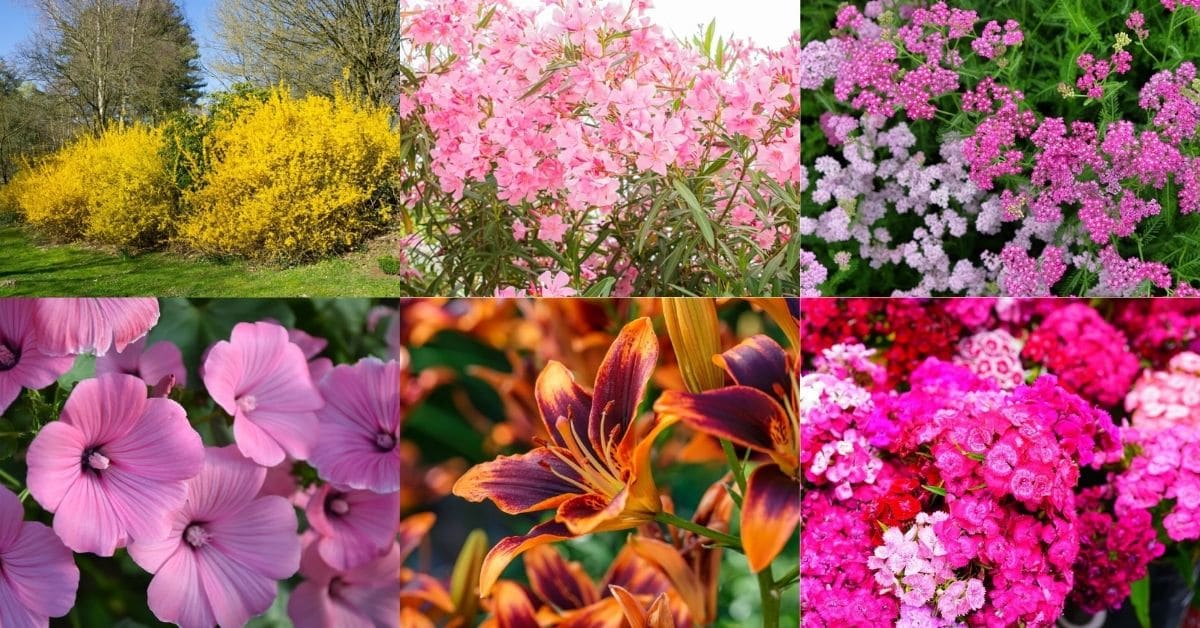
Jump to:
- Low-Maintenance Growing Tips
- Giant Hyssop (Agastache foeniculum)
- Coneflower (Echinacea sp.)
- Pasque Flower (Pulsatilla vulgaris)
- Sedum/Stonecrop
- Blazing Star (Liatris sp.)
- Dianthus/Pinks (Dianthus sp.)
- Daylily (Hemerocallis sp.)
- Hens & Chicks (Sempervivum)
- Hardy Hibiscus/Rose Mallow (Hibiscus moscheutos)
- Yarrow (Achillea sp.)
- Large-Flowered Tickseed (Coreopsis grandiflora)
- Russian Sage (Perovskia atriplicifolia)
- Weigela (Weigela sp.)
- Weeping Forsythia (Forsythia suspensa)
- Summersweet (Clethra alnifolia)
Low-Maintenance Growing Tips
1. Set up drip irrigation or automatic watering system. Avoid sprinkler systems because they aren't efficient and cause lots of water waste. If you're paying for water, this is a big deal. Also, sprinkler systems water from above which leaves wet leaves and invites pests and disease. Watering at ground level is the best scenario.
2. Plan regular checks of the landscape and plants. This doesn't have to take long, just a 10-15 minute walk around to look at the leaves, check for pests, and see how everything is doing. Catching problems early is essential to keep things low-maintenance. If issues are allowed to fester, they become worse and take more time to handle. Do this check once a week.
3. Mulch around the plants to reduce weed growth and increase water retention. A 2-3 inch layer of mulch prevents water from evaporating at a high rate, which means you won't have to water as often. This saves time and money!
Giant Hyssop (Agastache foeniculum)
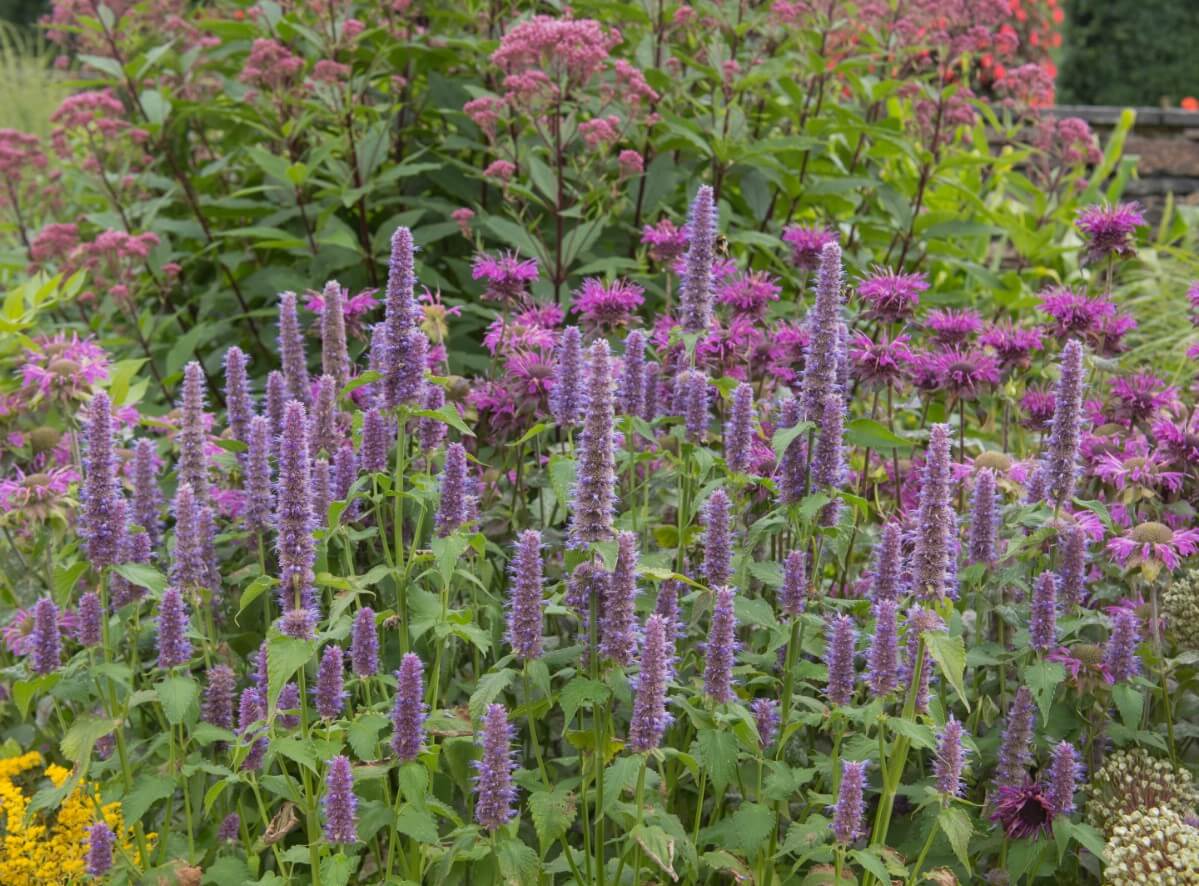
The bottle-brush-like flower spikes make this low-maintenance perennial the perfect, striking addition to the landscape. Giant Hyssop grows 2-3 feet high, and the flower spires loom over the unassuming green foliage.
In addition to providing stunning color, the leaves smell wonderfully like anise when crushed. Giant Hyssop comes in a variety of blues and purples and grows readily in the garden. It forms little colonies on its own, and while it's not an aggressive grower, it does need to be tamed a little bit each year, so it doesn't get out of control.
Bees, especially native bee species, love Hyssop, so you'll be helping the ecosystem too with this plant. Hardy to zones 5-9.
Coneflower (Echinacea sp.)
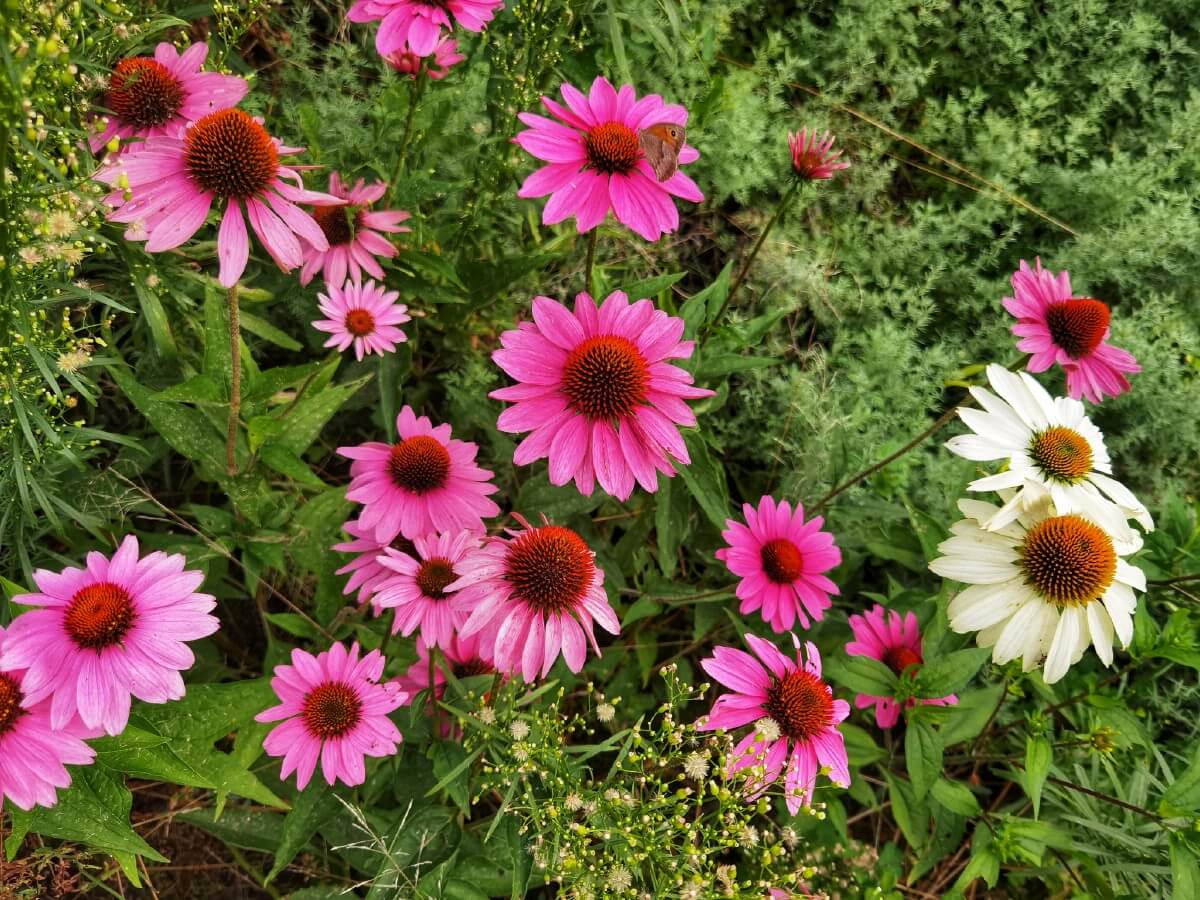
There is such variety in the Coneflower world that it is easy to plant an entire landscape with this perennial flower and never be bored. There are orange, red, purple, yellow, pink, and blue Coneflower varieties, with a wide variation in height, growth habits, and preferences. But best of all, they're super low-key and need very little attention after planting, which leaves you with lots of time to admire them.
Butterflies, bees, and hummingbirds all appreciate this beautiful flower, while deer dislike it. The blooms last for a long time, and each plant flowers profusely, so there is a constant array of colors in the garden. Hardy to zones 4-10.
Pasque Flower (Pulsatilla vulgaris)
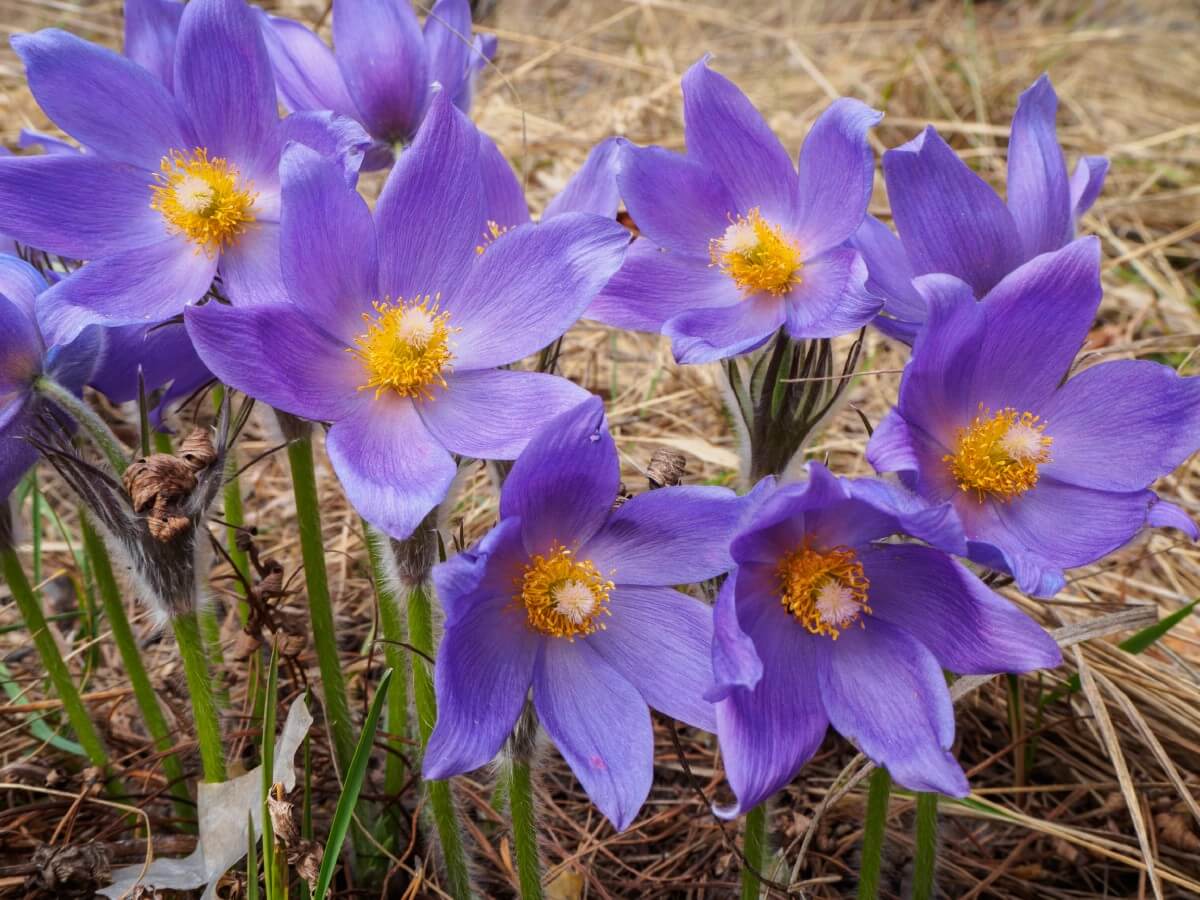
Early blooming Pasque Flower lights up the landscape in spring with bright, heart-warming displays and showy blooms. Pasque Flower is one of the first spring bloomers and celebrates this momentous farewell to winter with a prolific production of flowers. One plant can produce up to 30 blooms in just a couple of months.
The bell-shaped, upward-facing flowers come in a variety of blue and purple shades, which are contrasted wonderfully by the prominent, bright yellow center stamens. Pasque Flower plants aren't very tall, averaging 9-12 inches, but they don't need to be giant to be stunning.
These perennial blooms are incredibly low-maintenance and will re-seed and establish themselves happily in a garden with full sun and good drainage. Hardy to zones 4-8.
Sedum/Stonecrop
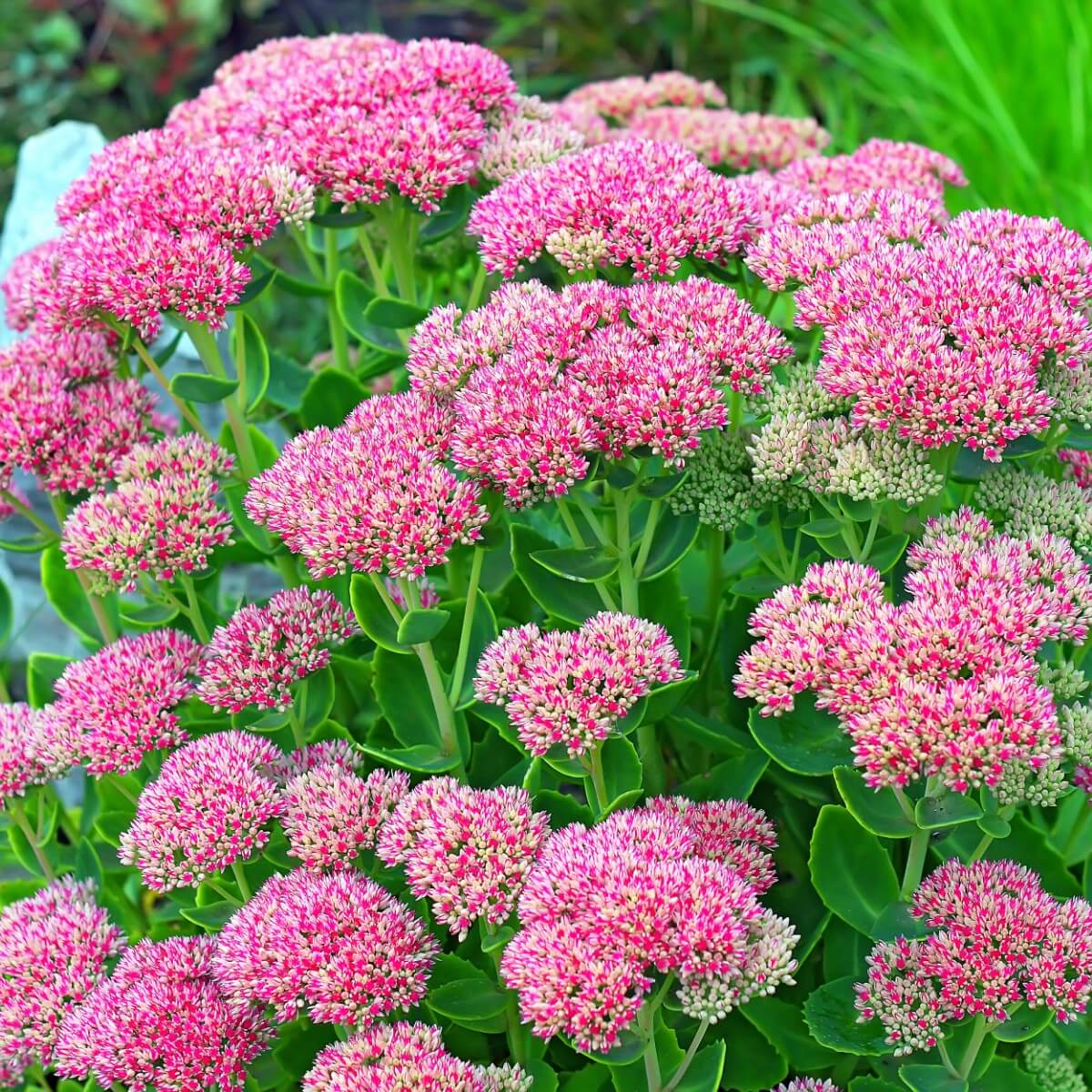
Gardening doesn't get much easier than Stonecrop. This versatile, fuss-free perennial doesn't only feature beautiful little flowers; it also has attractive foliage that remains year-round. Seriously, this is a plant that always looks good and doesn't take much effort; it's a no-brainer.
Sedum flowers are star-shaped and tiny and form dense clusters similar to a head of a broccoli. There are dozens of different cultivars, with flowers ranging from pink to white to purple to red. And, the options for foliage are even more varied, with many striking bi-color variegated types that are stunning even when not in bloom.
The flowers attract butterflies, hummingbirds, and bees and look beautiful planted in large groupings. Sedum is hardy to zones 3-9.
Blazing Star (Liatris sp.)
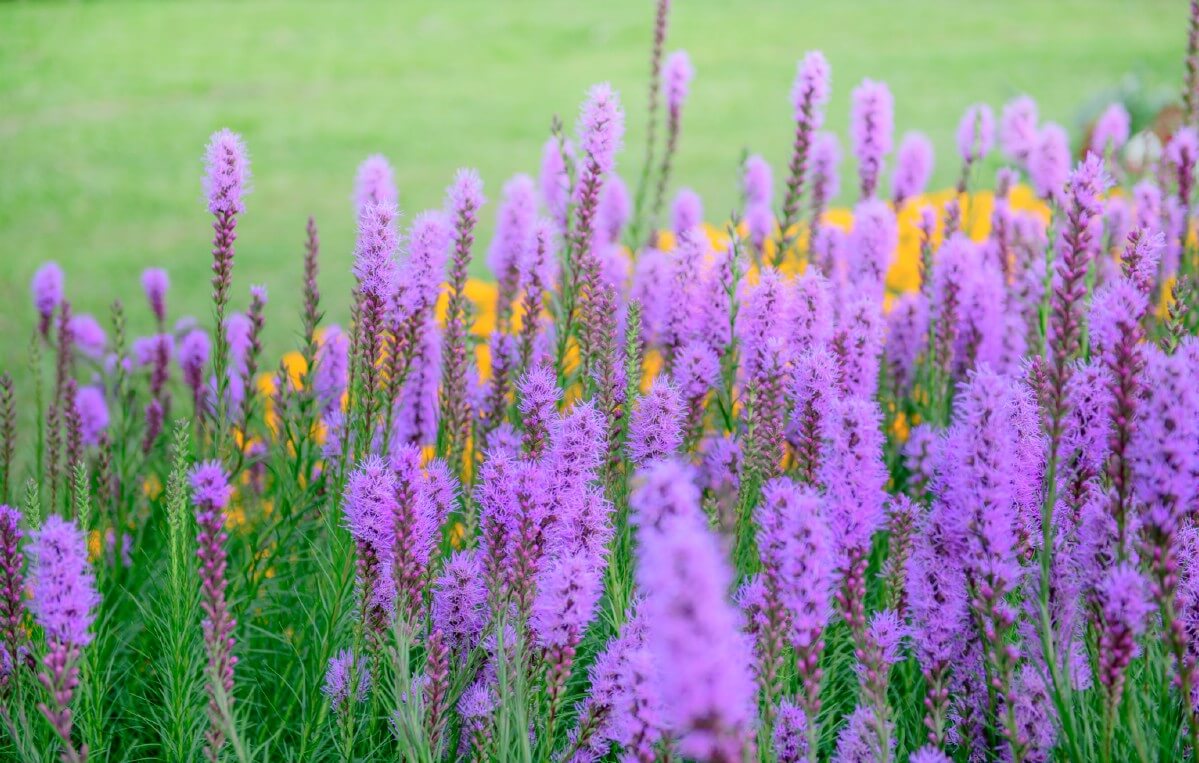
Tall spikes of densely packed lavender-purple flowers are the trademark of Blazing Star. A mass planting of these is a statement piece, made all the more magnificent by the hordes of butterflies, bees, and hummingbirds who visit.
Blazing Star flowers last for weeks and add a stunning vertical element to the landscape. The foliage is feathery and grass-like and turns to a nice bronze color in autumn. Blazing Star is a native tolerant of poor soil, heat, drought, and humidity and rarely suffers from pests or disease.
This perennial flower looks especially attractive as a garden border or planted along a fence line. Hardy to zones 3-9.
Dianthus/Pinks (Dianthus sp.)
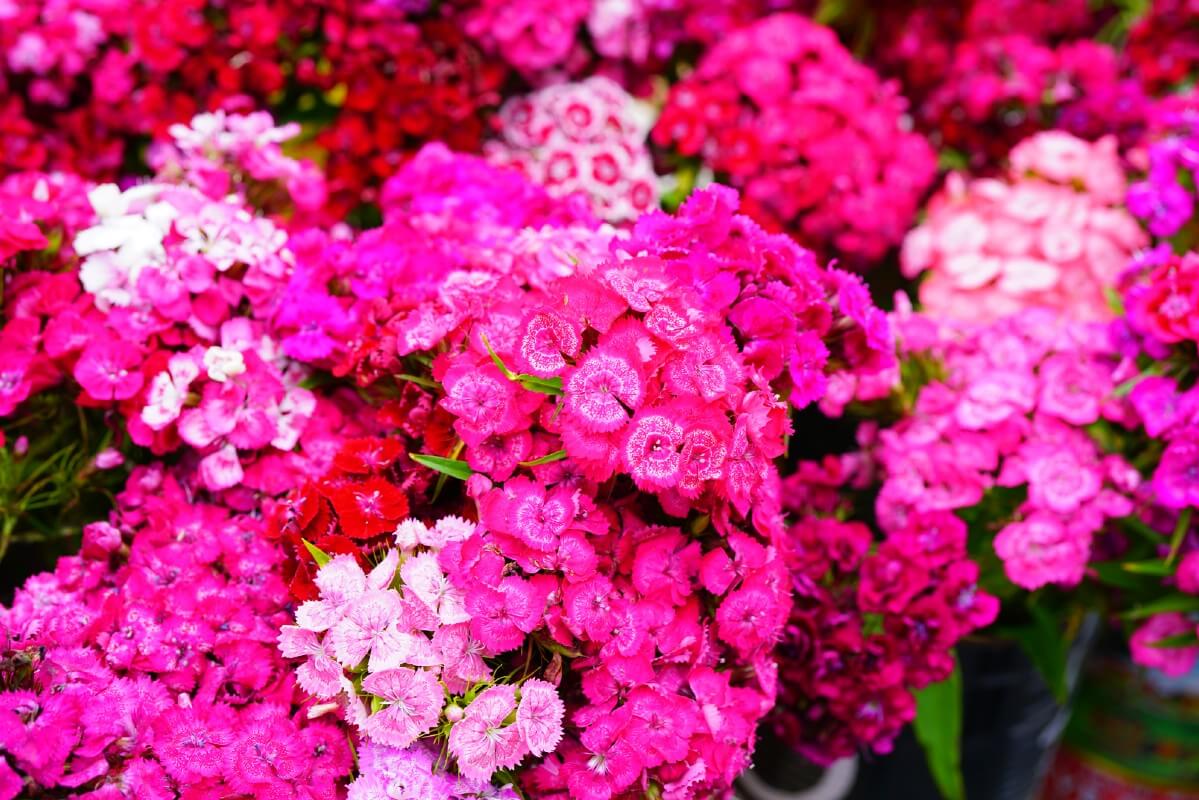
The bright splashes of color from Dianthus make a landscape absolutely glow. The classic, popular Dianthus that the name Pinks comes from is brilliant, eye-catching, and lights up the flower garden.
The small five-petaled flowers with fringed edges form mats of color, which contrast beautifully against the minimal green foliage. Dianthus plants need almost no care, happily returning year after year in all their glory. In fact, you may have to take measures to keep this one in check as the low-lying plants will spread out as far as you allow them.
Nowadays, there are hundreds of options for Dianthus flowers, with some genuinely striking colors and patterns. Some of the more spectacular Dianthus cultivars:
"Black and White Minstrels" – This double-flowered Dianthus has deep black petals with burgundy and pink trimmed edges.
“Laced Monarch” – A stunning Dianthus with pink and burgundy double blooms that make it look like a miniature carnation.
“Pop Star” – A light pink double bloom with a deep burgundy center.
“Pinball Wizard” – The light pink petals with dark pink stripes and markings is reminiscent of candy canes.
"Raspberry Swirl" – Each petal is outlined in deep crimson red and filled with pure white. The details are so precise that it looks like someone painted each flower.
Daylily (Hemerocallis sp.)
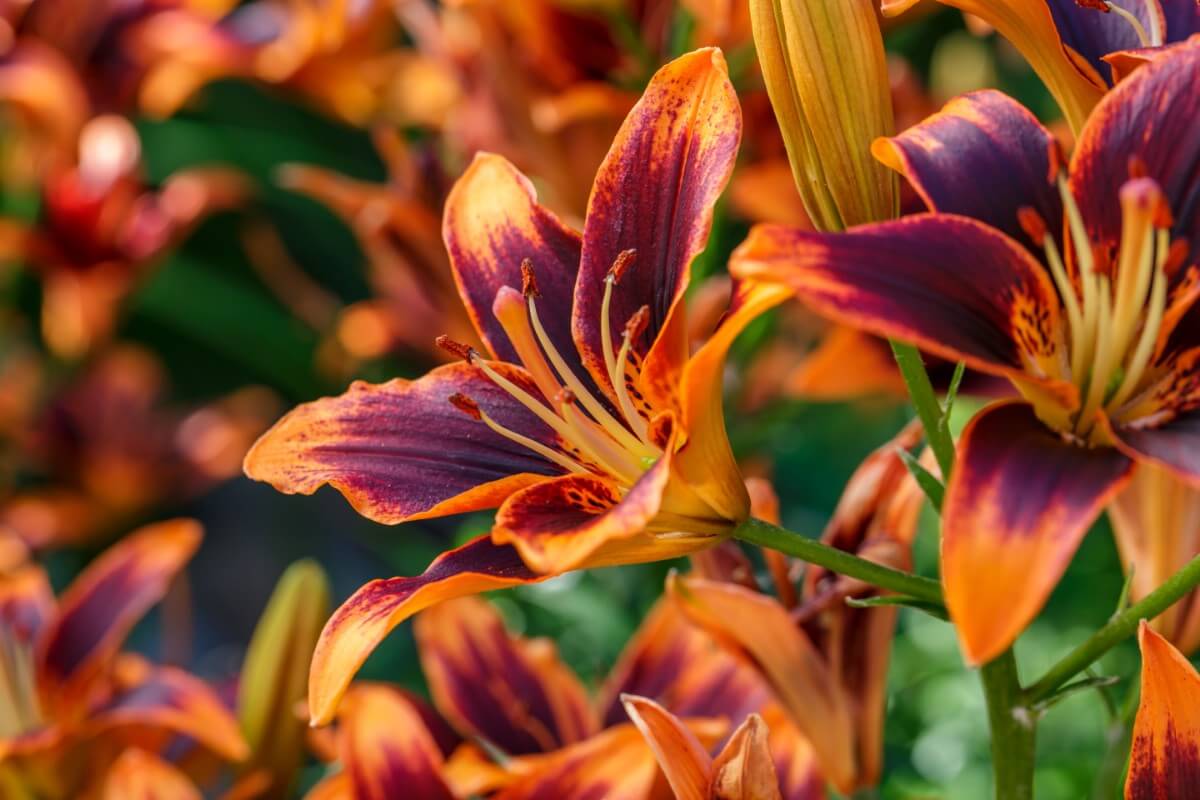
With over 50,000 registered cultivars, the world of Daylilies is immense, creative, and inspiring. The fact that they are super low-maintenance is just the icing on the cake.
Daylily colors run the gamut, with some truly stunning bi-color and multi-color options. Daylilies are organized by blooming season – there are early season, mid-season, and late-season options. If you take some time to plan, you can create a Daylily flower garden that blooms continuously from late spring through fall.
The neat thing about Daylilies is that each bloom only lasts about 24 hours, but there are so many buds on a flower stalk that you most likely won't even notice. There is always a new bloom the next day to replace the faded one. Hardy to zones 3-9.
Hens & Chicks (Sempervivum)
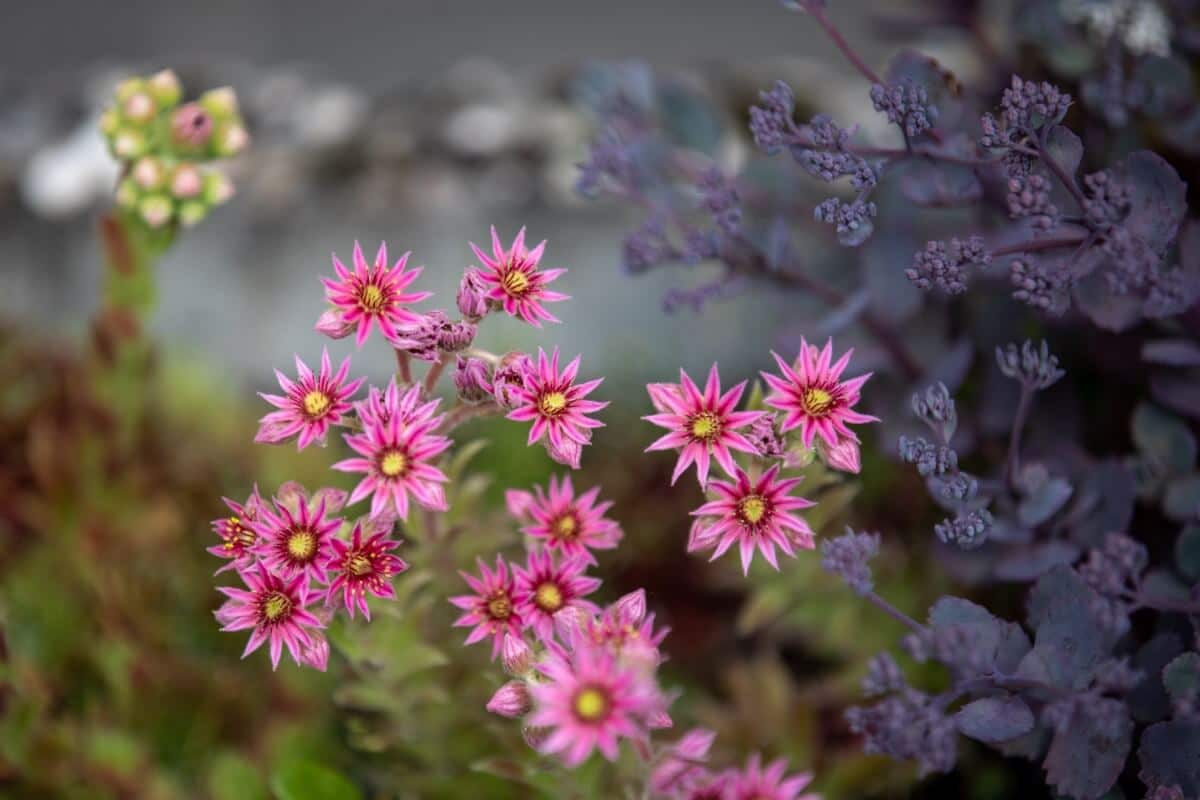
The mat-forming succulent with a cute name, Hens and Chicks are a staple in many landscapes because of their minimal needs and appealing aesthetic. This succulent forms rosettes of fleshy, thick leaves that vary in color based on the season, sun exposure, and climate.
Hens and Chicks are available in various colors, from green to pink, to purple to brown. Most varieties are multi-colored, with tips a different color than the rest of the petal. This perennial succulent is drought and heat tolerant and will even grow in the shade. They also do well in poor soil, including gravel or sand heavy ground.
If you're looking for a plant that requires almost no care at all, this is the one. Plant several different varieties for an enriching and artistic landscape design. An assortment of Hens and Chicks planted in close quarters creates a beautiful, living mosaic. Hardy to zones 3-8.
Hardy Hibiscus/Rose Mallow (Hibiscus moscheutos)
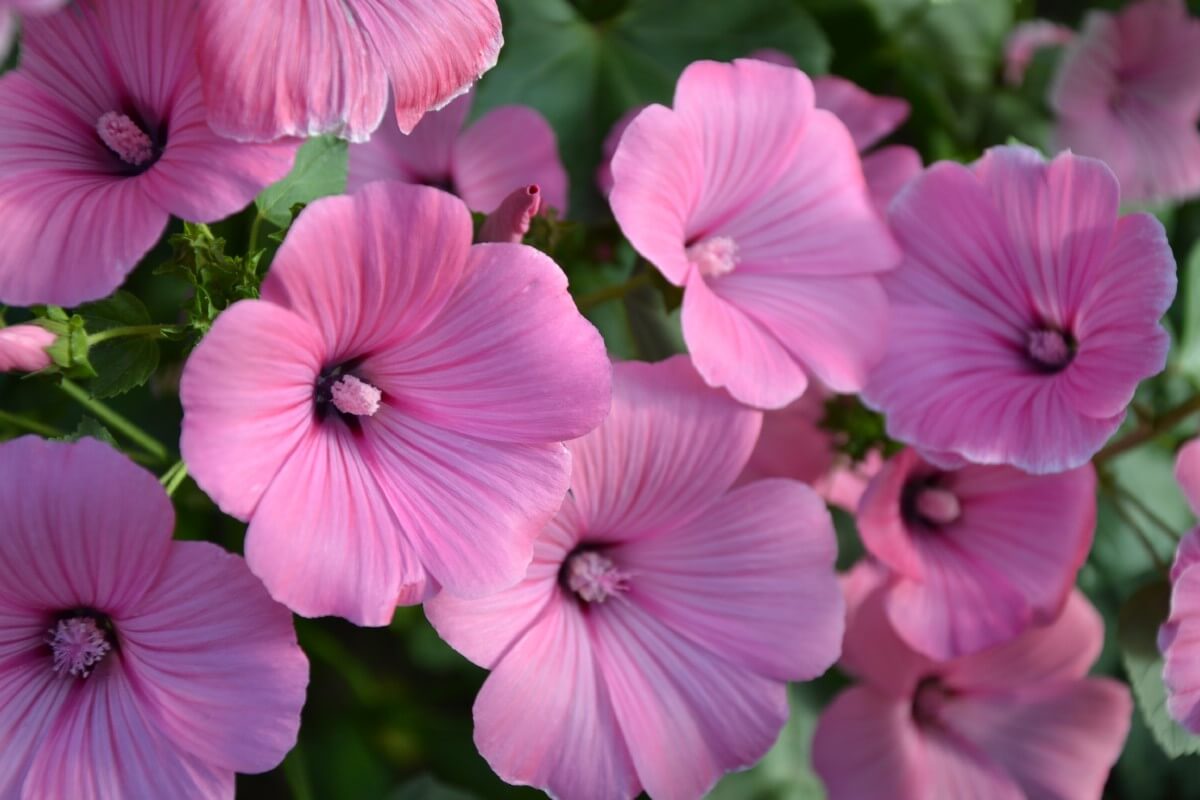
The massive and prolific flowers of Hardy Hibiscus are quite the show when it is in bloom. Butterflies and moths adore Hardy Hibiscus and use it as a host plant for their larvae, while bees and hummingbirds can't resist the giant flowers and rich nectar.
Hardy Hibiscus is a shrubby perennial, averaging 3-7 feet tall depending on the species and your pruning, and it often reaches 2-4 feet wide. It is tolerant of heat, humidity, and drought and has been a landscape favorite for decades. Flowers are usually a single color or bi-color with a contrasting center eye.
When in full bloom, the effect of flowering Hardy Hibiscus is quite dramatic. Plant this perennial flower where you'll be able to enjoy it easily; we like locations where it is easily seen from an inside window, near a porch, or along a walkway. Hardy to zones 5-9.
Yarrow (Achillea sp.)
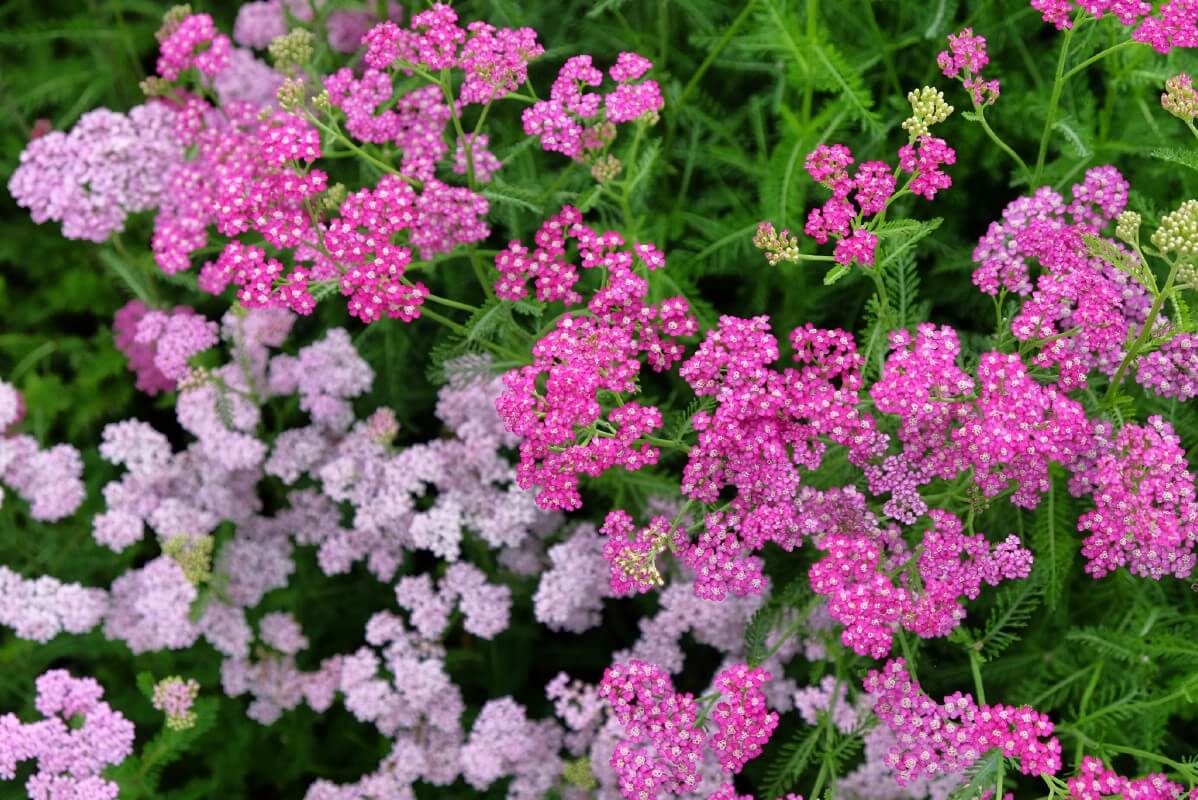
Many folks consider Yarrow an unassuming roadside weed, not worthy of being included in the landscape, but we beg to differ. Yarrow is prolific because it grows easily; therefore, it has incredible value in the low-maintenance garden.
Yarrow is also an essential flowering perennial that is irresistible to butterflies. If you plant Yarrow, you will have visiting butterflies! This unfussy perennial tolerates dry soil, poor soil, some shade, full sun, and drought.
Yarrow comes in pink, purple, white, yellow, red, and orange, with many bi-color options. The blooms last for weeks and become a hub of pollinator activity when in full bloom. Yarrow is hardy to zones 3-9.
Large-Flowered Tickseed (Coreopsis grandiflora)
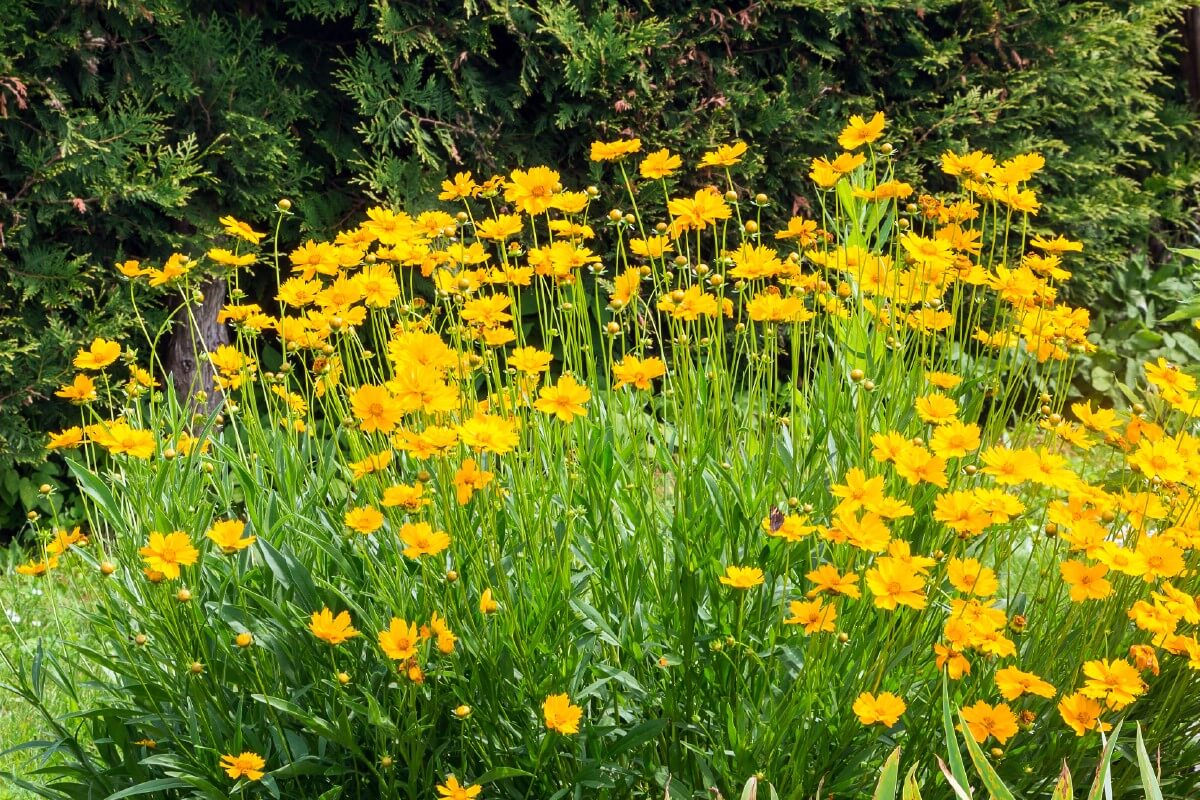
Thank goodness this bright showy native summer flower doesn't actually attract ticks! The odd common name refers to the size and shape of the flower seeds, which look like tiny ticks.
Tickseed flowers bloom for months, from late spring all the way through summer, and need minimal care. They are tolerant of drought, heat, and humidity and rarely suffer from disease or pests. Large-Flowered Tickseed blooms average 2-3 inches across, and the sunny yellow flowers grow above the slender green foliage.
Tickseed is prolific, eye-catching, and attracts tons of butterflies, bees, and pollinating insects in full bloom. Hardy to zones 4-9.
Russian Sage (Perovskia atriplicifolia)
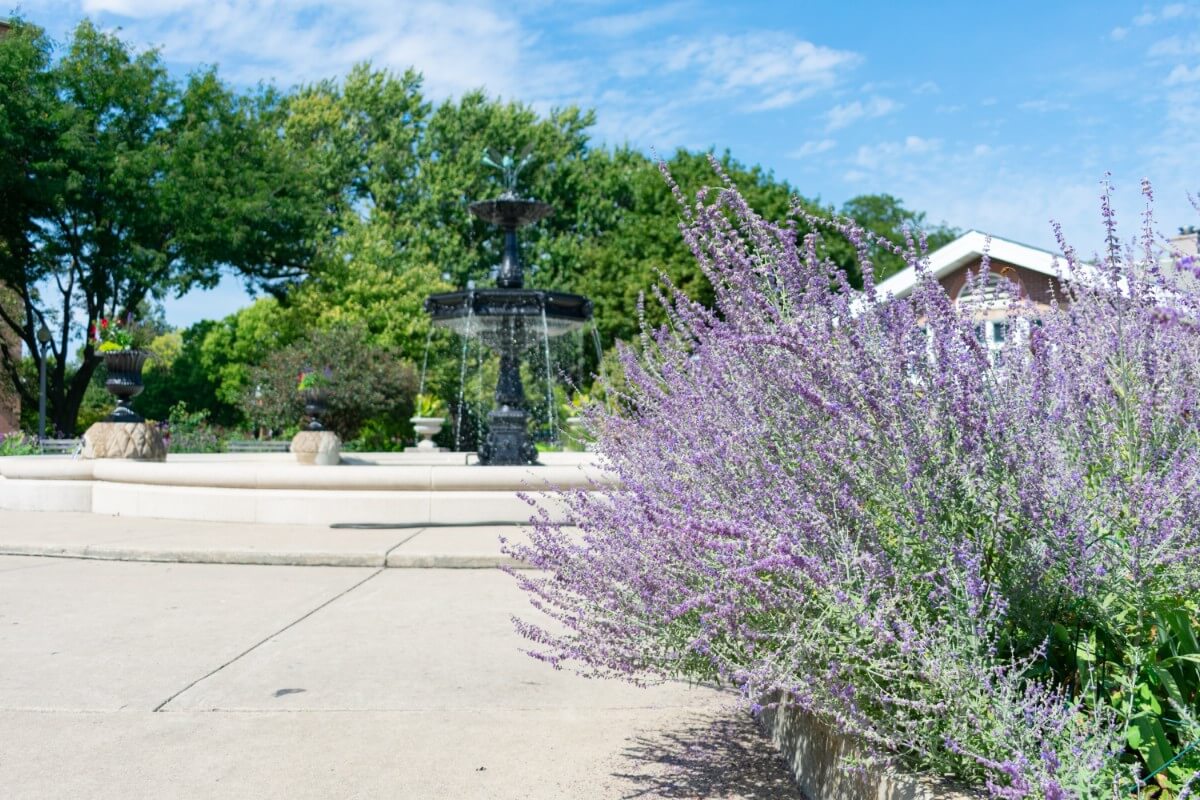
One of the best plant-and-walk-away perennials, Russian Sage requires so little care it's almost unbelievable. Adaptable to a variety of excellent and poor soils, tolerant of heat and drought, and rarely affected by pests and disease, there's not much that can damage Russian Sage. It's also resistant to deer and rabbits and adored by hummingbirds and butterflies.
Russian Sage isn't particularly showy, but the long spires of tiny lavender-blue flowers are attractive, and the leaves give off a pleasant minty scent when rubbed. The flowers are so abundant in full bloom that it looks like a cloud of color above the blue-green leaves. Hardy to zones 5-9.
Weigela (Weigela sp.)
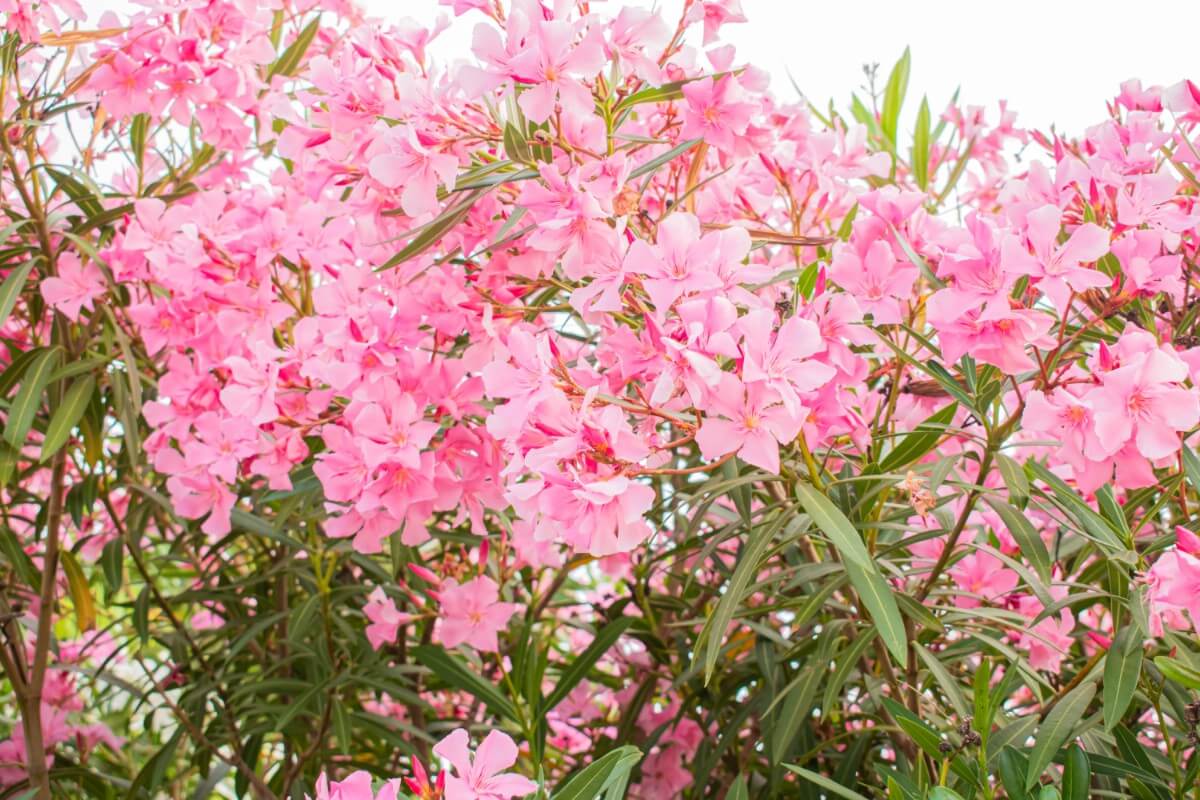
An upright deciduous shrub that blooms in early to late spring, Weigela is beloved by hummingbirds and ignored by deer. This shrub grows 4-8 feet tall and, when in bloom, is literally covered with small, bright, colorful bell-shaped flowers. It makes an excellent hedge or border plant and requires very little pruning to keep it attractive and the growth in check.
Many Weigela cultivars also have highly attractive variegated or multi-colored foliage, which looks fantastic even when not in bloom. One of the easiest shrubs to grow, Weigela rarely gets diseased and grows quickly. Hardy to zones 5-9.
Weeping Forsythia (Forsythia suspensa)
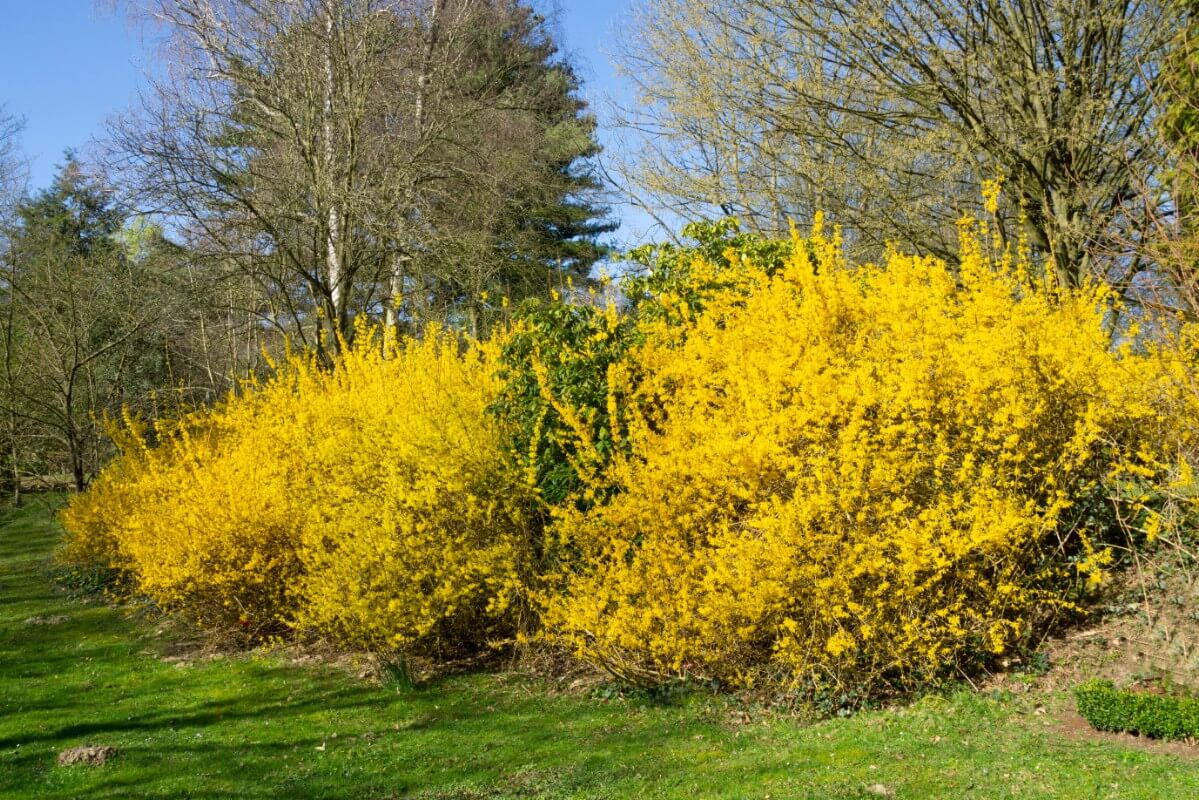
If you've got ample space to fill in the landscape, Weeping Forsythia will gladly fill it up. This deciduous shrub grows upright, then the branches arch downwards, creating a fountain-like effect.
In early spring, the golden yellow flowers appear on naked branches, lighting up the landscape and announcing the arrival of spring to all who see it. Weeping Forsythia flowers are small and trumpet-shaped and appear in massive numbers up and down the branches.
In full bloom, this Forsythia is a fountain of sunshine. It grows well in various soil conditions, will grow in full sun or partial shade, and isn't prone to pests or disease. Hardy to zones 6-8.
Summersweet (Clethra alnifolia)
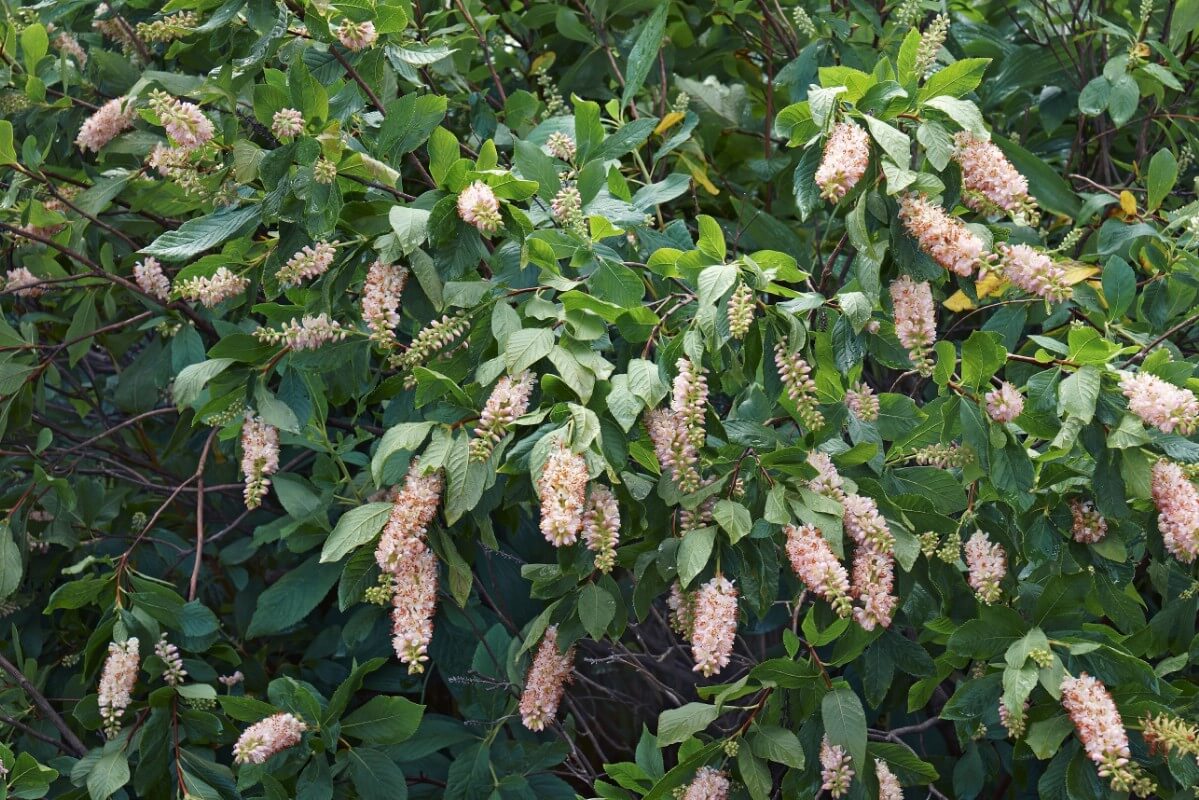
This super fragrant native perennial shrub is virtually trouble-free. Summersweet bursts into bloom in the late summer with spikes so laden with flowers that they look like bottlebrushes.
The little white flower blooms stay for 4-6 weeks and attract hordes of native pollinators who are incredibly thankful for a late-season source of nectar. Summersweet grows almost as well in shade as it does in full sun and isn't picky about soil type. Deer generally avoid Summersweet, and there are rarely severe disease or pest issues.
Summersweet does need yearly pruning to keep it from looking gangly and to keep it from spreading, but other than that, you won't have to do much to keep it alive and well. This native shrub grows 3-8 feet tall and will spread 4-6 feet wide, so make sure you've got adequate space before planting it. Hardy to zones 3-9.

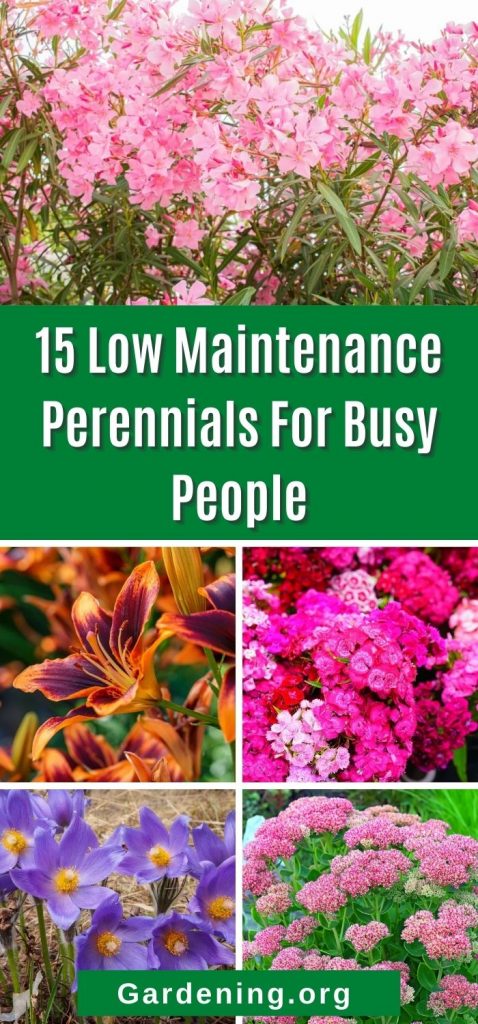

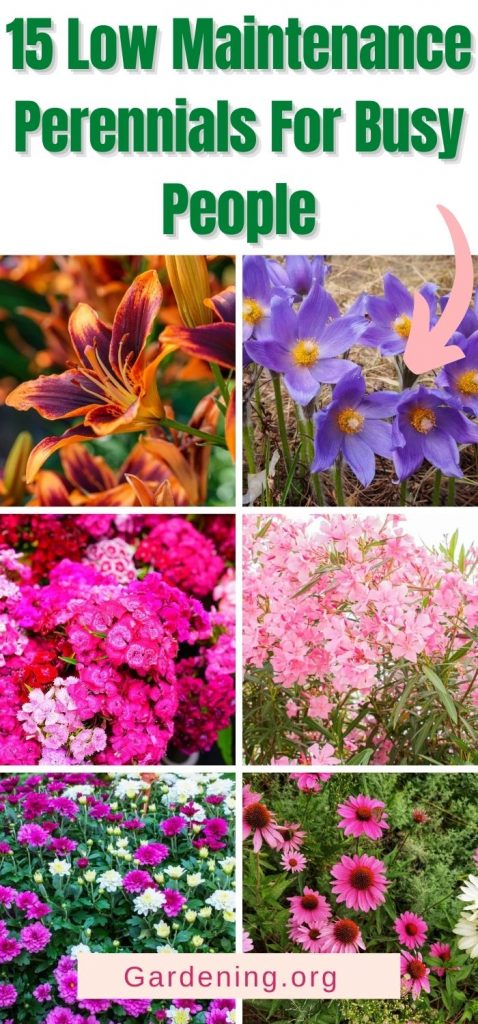
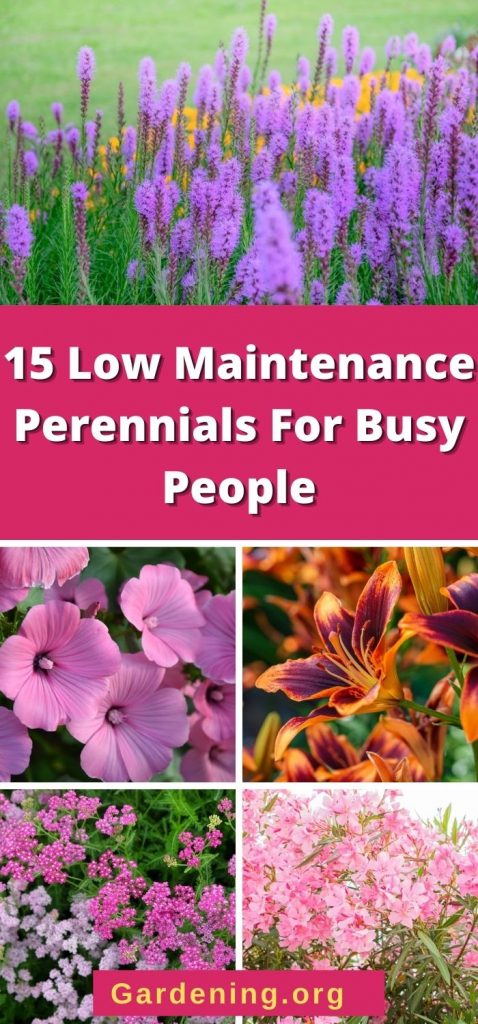
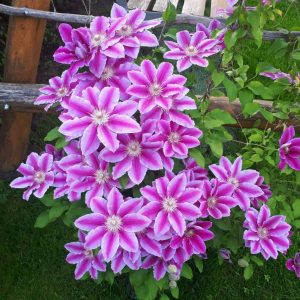
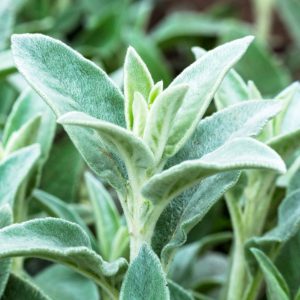

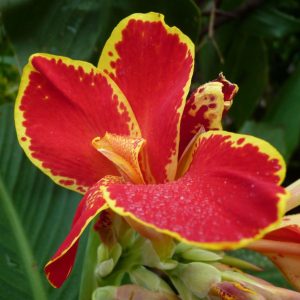
Hilda Wilkerson
Very good information and helps me decide what to plant in my area.
Pam
This was a lot of help